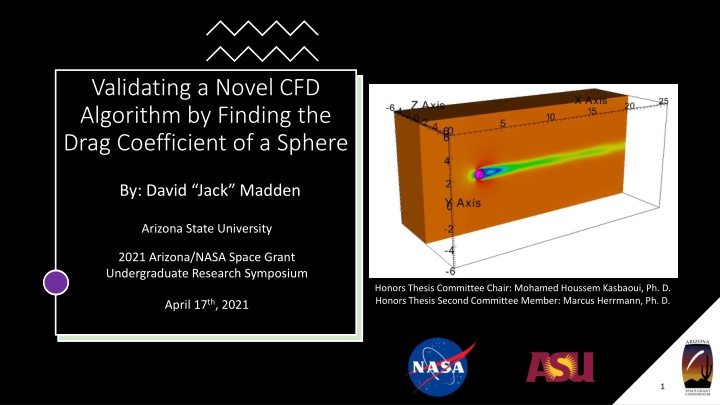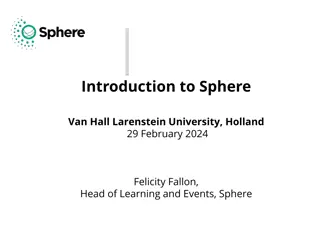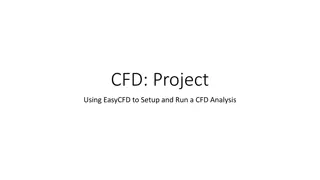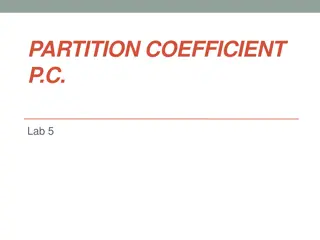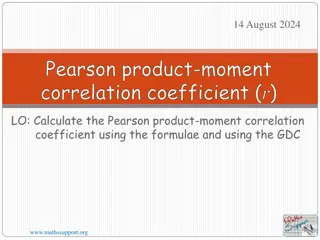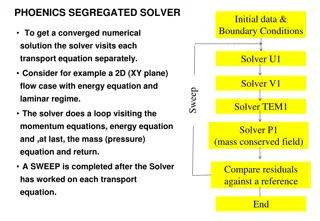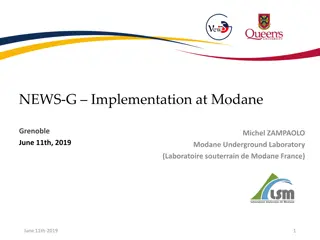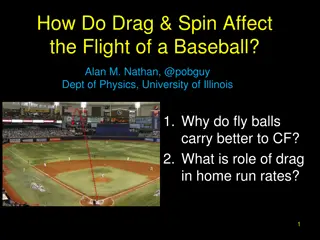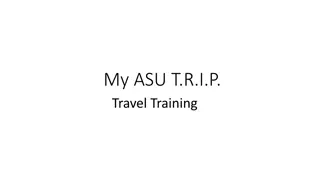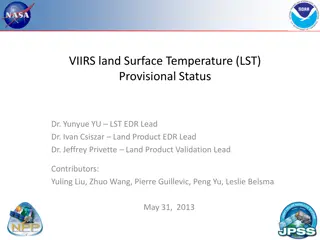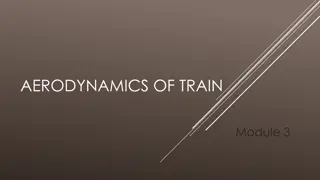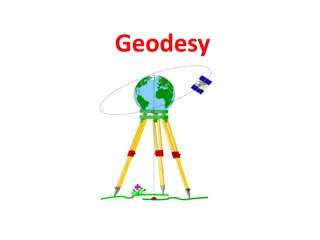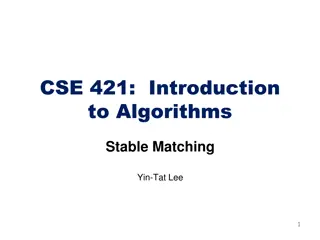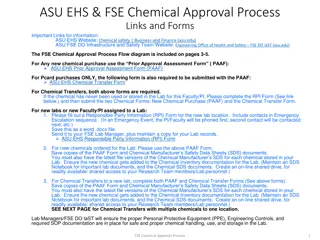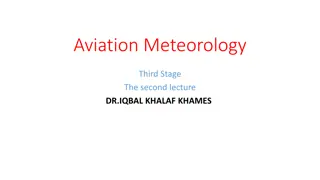Validating a Novel CFD Algorithm: Drag Coefficient of Sphere at ASU
A study presenting the validation of a novel Computational Fluid Dynamics (CFD) algorithm developed by the Kasbaoui Research Group at Arizona State University. The research focuses on testing the algorithm in three dimensions and determining simulation parameters for accurate hydrodynamic force computation on a submerged solid. The study delves into Navier-Stokes equations, body conforming meshes, and the Immersed Boundary Method, highlighting the advantages of reduced computational cost. Methodology details Reynolds numbers and CFL parameters used.
Uploaded on Mar 01, 2025 | 0 Views
Download Presentation

Please find below an Image/Link to download the presentation.
The content on the website is provided AS IS for your information and personal use only. It may not be sold, licensed, or shared on other websites without obtaining consent from the author.If you encounter any issues during the download, it is possible that the publisher has removed the file from their server.
You are allowed to download the files provided on this website for personal or commercial use, subject to the condition that they are used lawfully. All files are the property of their respective owners.
The content on the website is provided AS IS for your information and personal use only. It may not be sold, licensed, or shared on other websites without obtaining consent from the author.
E N D
Presentation Transcript
Validating a Novel CFD Algorithm by Finding the Drag Coefficient of a Sphere By: David Jack Madden Arizona State University 2021 Arizona/NASA Space Grant Undergraduate Research Symposium Honors Thesis Committee Chair: Mohamed Houssem Kasbaoui, Ph. D. Honors Thesis Second Committee Member: Marcus Herrmann, Ph. D. April 17th, 2021 1
Introduction The Kasbaoui Research Group (KRG) has developed a Novel algorithm for use in Computational Fluid Dynamics (CFD) Previous testing has focused on two dimensions, but now the algorithm must be proven to work in three dimensions before development can continue 2
Goals 1. Validate that the novel algorithm worked successfully in three dimensions 2. Determine the simulation parameters required to compute the hydrodynamic forces on a submerged solid with high-fidelity 3
Navier Stokes Equations Momentum Conservation Mass Conservation ?? ??+ ? ? = 0 ?? ??+ ? ? = ? + ? ? + ? 2 ? ? 4
Immersed Boundary Method ?? ??+ ? ? = ? + ? ? + ? 2 ? + ??? ? ??? ?,? ? ? ? ?? ??? ?,? = ? ??? 7
Advantages of IBM Reduced Computational Cost Better Particle Resolved Direct Numerical Simulations 9
Methodology Reynolds Numbers = 10, 25, 50, 100, 200, 300 d/ x = 6, 12, 24 12d CFL = 0.10, 0.25 10
Schiller Naumann Correlation Mordant & Pinton, The European Physical Journal B - Condensed Matter and Complex Systems , 2000 11
Conclusions and Future Work The algorithm converges with increasing resolution as expected. This successfully validates the algorithm for continued development in three dimensions. Future work will focus on testing different 3D shapes and multiple 3D objects at once. 15
